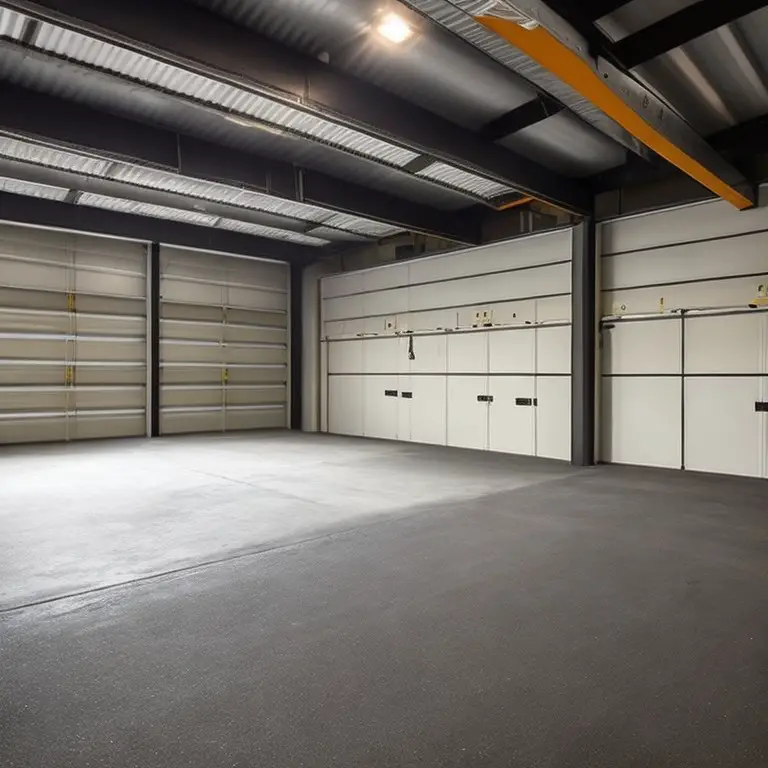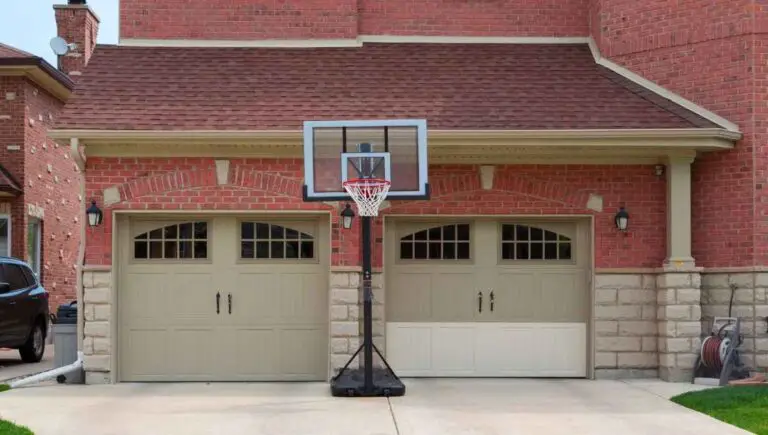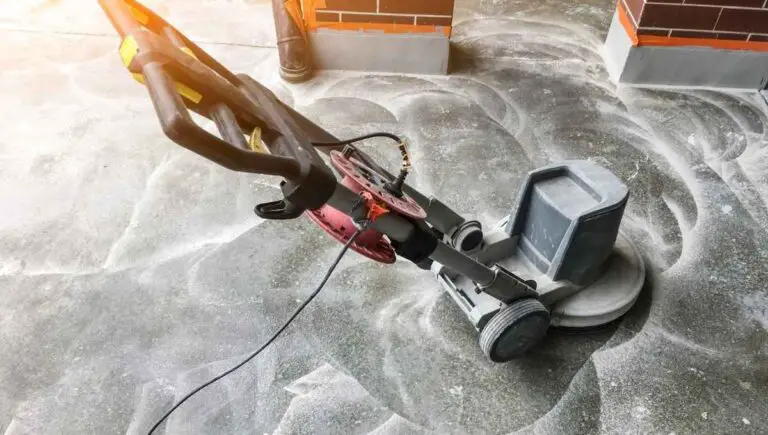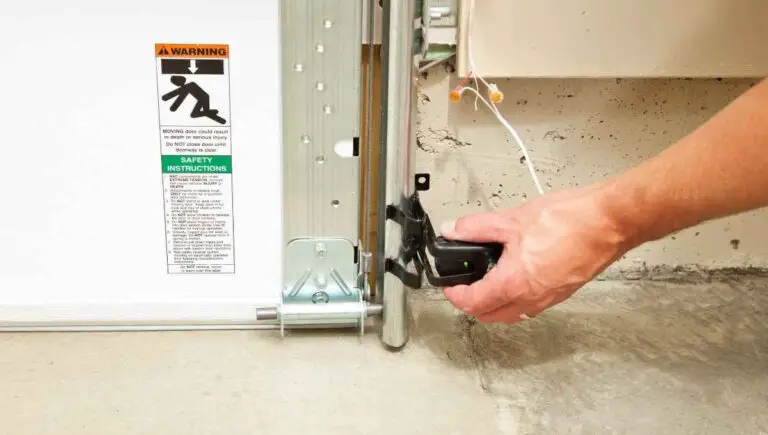Does a Garage Need Ventilation? (Building Codes and Safety)

A garage is an important part of many homes, serving as a place to park vehicles and store tools and other items. But when it comes to proper ventilation, many people wonder whether their garage needs it.
Proper ventilation is a necessity in your garage. Without ventilation, your garage will not pass inspection. Additionally, you risk accidental injuries from chemical, heat, and fuel build-up from vehicles and other sources within your garage.
While that may seem discouraging, it’s all there to keep you safe. Therefore, in this article, we will go over all the vital parts of ventilation for a garage and how to use vents and fans to ensure your safety. Let’s get started!
This post contains affiliate links. This means Household Blogger may earn a commission should you make a purchase using any of our links. Please refer to our full affiliate disclosure policy for full details.
Here’s a Quick Pro Tip!
While there aren’t building codes that require specific ventilation in your garage, you still want to be sure there is airflow in there if you’re going to spend any time in your garage. However, adding ventilation doesn’t have to be expensive!
There are plenty of options to add ventilation to your garage. Some require having windows, and some don’t. Here are three of our favorite options to add ventilation to your garage:
1. AC Infinity AIRLIFT T16 – Air conditioning and exhaust fan in one!
2. High-Powered Blow Fan – Ensures that the fumes are gone quickly.
3. Solar Powered Fan Vent – Harness the sun’s power, and save on your electric bill!
Ventilation in your garage
You already know that your building codes require you to have proper ventilation for your garage, but how do you ensure you install it properly? We’ve got the answers!
How Do You Ventilate a Garage?
If your garage already has windows, you can ventilate them quickly by opening them, as well as opening any doors you can. Adding fans to the windows or the ceiling can also help with ventilation.
If you do not currently have any fans for your garage, and you work or spend considerable time in your garage, you should consider adding some. They can help circulate fresh air and prevent accidental fume build-ups.
Do You Need to Vent an Uninsulated Garage?
Regardless of whether or not you’ve chosen to insulate your garage, it should be ventilated. Ventilating your garage ensures you cannot accidentally become overpowered by your car’s exhaust or other dangerous fumes.
However, most places do not require ventilation in an uninsulated garage, according to building codes. This being said, it is still highly recommended that you do so for your and your family’s safety.
Why Is Garage Ventilation Important?
Garage ventilation is important because if you spend lots of time in there, say, working on hobbies or fixing up your vehicle, you need to get rid of any fumes that may build up from the car exhaust or chemicals.
If you fail to remove these fumes, you can be overcome by them and may require medical attention. The most common concern for unvented garages is carbon monoxide poisoning, which happens when there is too much carbon monoxide and insufficient oxygen in the air.
You might also enjoy our post on If You Can Vacuum Your Garage
How Can I Vent My Garage With No Windows?
If your garage does not have windows and you need to vent it, your best option is to open all the doors to the garage to allow air to circulate. If you have a fan, turn it on and face it so it blows fresh air into the building.
Having portable fans in your garage can significantly help with ventilation if there is currently none in your garage. With portable fans, you can move them to the windows when needed or have them blowing on you to cool you down as necessary.
How Do You Ventilate a Concrete Garage?
You can cut out a space for windows or add an exhaust fan to existing windows if you need to create a space for ventilation in your garage. You can also simply open the doors and windows to allow extra airflow.
Either way, having an exhaust fan in your windows is a great way to address ventilation problems. A fan helps circulate clean air and clear out carbon monoxide and other toxic chemical build-ups from within the building.
Vent Types
So, you know you want to add some vents to your garage, but you’re not sure where to start. After all, there are many types, and does it really make a difference which one you choose? We’ll help you figure it out below!
How Do You Vent an Insulated Garage?
You can add vents to an insulated garage by either adding fans into the existing windows of the garage or by cutting out a space to install a window or other exhaust options. If that sounds too intense, you can also have a professional install an HVAC system.
You may also want to consider adding soffit vents to your current garage setup. These vents will allow for greater airflow while not sacrificing your current insulation. You can also add ceiling fans to help circulation.
Does a Garage Need a Ridge Vent?
A ridge vent is typically added to the peak of a building’s roof to help circulate and release hot air. While a ridge vent is not typically a code necessary part of a garage roof, it is certainly helpful.
Adding a ridge vent to your garage roof can help circulate the warm air that rises to the top of the garage. This air will typically be humid, and without proper ventilation can lead to your garage roofing retaining moisture and becoming more fragile more quickly due to water exposure.
Does an Unheated Garage Need Soffit Vents?
According to most building codes, garages do not need ventilation. However, having vents in your garage is better for your health and safety, and we recommend having vents installed.
Soffit vents are designed to help ventilate an attic or the upper levels of a garage or home. They lay over the end of your roof to pull out the warm, moist air that tends to accumulate in a building’s upper levels.
Should a Garage Attic Be Vented?
Venting your garage attic helps prevent the build-up of hot, moist air. However, if not properly ventilated, that air could eventually cause damage to your garage roof and support beams.
Additionally, vents help prevent the build-up of toxic fumes from chemicals and vehicles in your garage. Having window fans or exhaust vents in your garage helps ensure your safety while you use your garage for working on your vehicle or any other hobbies you may have.
Vent Placements
Now that we’ve gone over why vents are important in a garage, let’s discuss where your vents should be placed. After all, you’ve got options plenty of options. So let’s talk about them!
Does a Garage Door Need a Vent?
You may want to consider adding a vent to your garage door. While you will always have the option to open the garage door to vent the building, having a vent on the door can help with airflow when you don’t want to have the door open.
For example, in extreme weather conditions, you may not want to have the garage door fully opened, but getting airflow is still very important. That’s when you’ll want to be able to simply open the vents instead of the door.
Does a Garage Roof Need to Be Vented?
Adding vents to a garage roof can help your garage maintain a consistent, comfortable temperature. While garages don’t legally need ventilation, it’s recommended you have at least a couple of vents throughout the building.
Adding ridge or soffit vents to your garage can help regulate the temperature of your garage during extreme temperatures. It can also help prevent toxic fume or carbon monoxide build-up from occurring.
Can I Cover Garage Vents?
Garages don’t legally have to be vented, so if you want, you can cover your existing garage vents. To do so, you’ll have to remove the vents and cover the hole with plywood or drywall. However, this isn’t recommended.
Garage vents are designed to minimize the dangers of carbon monoxide build-up and other toxic fumes. Covering the vents can lead to your garage not having proper airflow, which is bad for you and the structure itself.
You might also enjoy our post on Where a Garage Floor Drain Goes
How Many Garage Roof Vents Do I Need?
If you know you want to add garage vents to your roof, plan on adding one every 300 feet. This ensures that your garage will get proper airflow without harming the roof’s structure.
You may want to consider adding venting that doubles as heating or air conditioning. There are ceiling vents that have solar panels built-in, which can provide air circulation without running up your electric bill!
Are Vents Required for Garages?
Vents are not typically required for garages, though they are always highly recommended. Because garages aren’t permanent living structures, they do not require a specific airflow and ventilation system.
You should always check your state and city’s laws and statutes concerning the ventilation of your garage to ensure that you follow their codes. Failure to follow codes can end in your garage being condemned or you receiving heavy fines and needing to remodel the garage to fit the specs of the code.
Fans in your garage
Arguably the fastest, cheapest, and easiest way to ventilate your garage is to add fans to the doorways and any existing building windows. However, there are also ceiling fans and other industrial fan options. So, which one do you choose, and what should you do with it? We’re talking about it now!
Where Should a Fan Be Placed in a Garage?
Fans are commonly placed in the windows and doorways of a garage to ensure adequate airflow to the main parts of the building. You may also want to place ceiling fans to help eliminate fume build-up.
Adding fans to the windows of your garage can help regulate the temperature. In addition, having ceiling fans help circulate the air and prevent fumes from building up close to the ceiling. This is also why you should have vents on a garage ceiling.
Are Garage Exhaust Fans Worth It?
If you perform lots of car maintenance or work on other hobbies in your garage, having an exhaust fan in your garage can literally be a lifesaver. Exhaust fans prevent toxic levels of fume build-up from occurring.
In our opinion, garage exhaust fans are well worth their price tag. They can help regulate the garage’s temperature without investing in heating or cooling equipment and ensure you don’t accidentally inhale your car’s exhaust fumes.
Will Ceiling Fans Help Vent a Garage?
Ceiling fans can help provide ventilation to your garage because it helps circulate the air. This means it can help regulate the air’s temperature and provide a way to move the air out of any open areas, such as an open door or window.
Utilizing ceiling fans to help move air can help in a garage. However, they cannot replace having actual vents. In addition, if you have an enclosed room, the fan will just circulate the existing air; it cannot blow the air out of a room without open windows. Therefore, while ceiling fans can help, you still need vents or windows.
You might also enjoy our post on Can You Replace Garage Door Window Inserts?
Related Questions
Why Is My Garage Hotter Than Outside?
Most garages aren’t insulated. Therefore, they will retain heat more easily. Unfortunately, this means that when you drive your vehicle into a garage and turn it off, the heat from the engine heats the garage, and without proper ventilation, that heat remains trapped in the building.
Additionally, if you have a dark roof on a sunny day, the sun’s rays shine directly onto the roof, heating the garage. Without an air conditioning system in place, your garage will get hotter than the outdoor ambient temperature.
How Can I Cool My Garage Cheaply?
If your garage is warmer than the outside temperature, open all doors and windows. You can purchase certain fans for under $20 and place them in the doorways and windows to improve airflow.
In addition, there are slightly more expensive fans and portable air conditioning units that will help cool down your garage more quickly. If you already have ceiling fans in your garage, be sure to use those to circulate the air and help keep the room cool.
How Do I Keep Mold Out of My Garage?
Proper ventilation and keeping the air dry is the best way to prevent mold. Use a dehumidifier if your garage tends to have hot, moist air. Also, make sure that all doors and windows are sealed properly.
You should also make sure there are drains for any water that may get into your garage. Without drains, standing water will stay until you manually dry it, or it will evaporate on its own over time, but that can lead to mold growth if left wet.
Final Thoughts
While building codes don’t typically require garages to have vents, they are important for your health and well-being. Unventilated garages can easily have toxic levels of chemical build-up, for example, carbon monoxide, and no one wants to get carbon monoxide poisoning.











